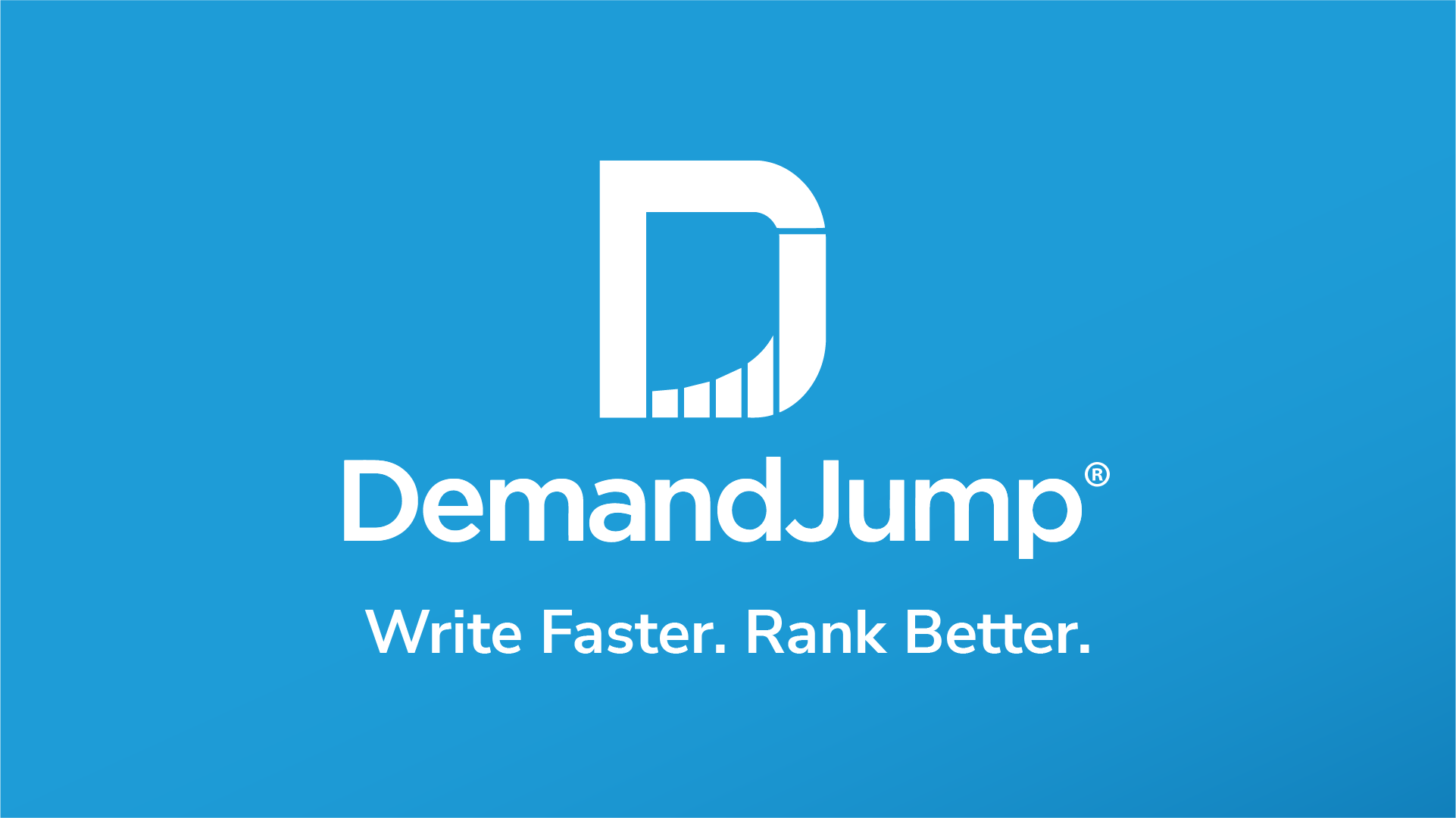What image does the word “cluster” call to mind for you? Is it a cluster of berries? A cluster of cancer cells? The shape of your favorite breakfast cereal? Or part of your favorite swear word to describe a bungled-up situation?
Regardless of how you define clusters now, we invite you to expand your perspective to include the topic cluster model of content marketing (if you haven’t already).
What are topic clusters in marketing? A content cluster SEO strategy means setting out to create an authoritative library of topics of content. Each SEO pillar you create should speak to the questions and phrases users are searching for most in both its main and supporting topics.
Creating content around topic clusters in SEO is a proven strategy to win search rankings—if you are also providing quality content users read and engage with, that is. If your content isn’t readable, the search algorithms will catch on, and you may not improve your ranking after all.
In this piece, we share the example of someone creating topic clusters and pillar pages as well as a little more insight into how DemandJump is a supercharged topic cluster generator.
What is a Cluster in SEO?
In SEO, a cluster refers to the linking structure of a website. Marketers and webmasters create a content cluster by interlinking different written pieces of content of varying lengths. Pieces can continue to be added to the cluster to deepen authority, address other topics of customer interest, and expand reach into new areas.
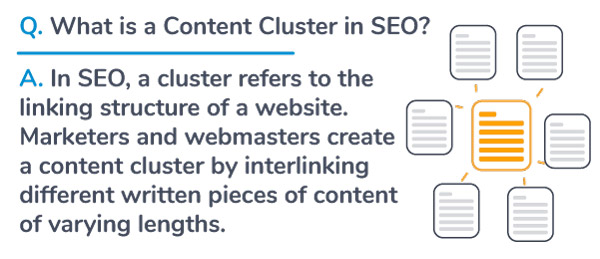
Pillar and cluster content is written with the targeted keywords of the campaign as its titles. Most often this content is published on a company’s blog.
Topic Cluster Content Strategy
A topic cluster content strategy requires publishing broad content speaking to the exact topics that users are searching for—in the exact language they are using to search.
Consider the example of a swimming pool retailer, Pete’s Pools. They certainly want to win page one ranking for the term “swimming pools,” so they intend to create a content cluster around that topic on their website. Pete heard about the DemandJump platform from another business owner who used the platform to get a better handle on SEO. He decides to sign up for a free trial, entering his own website URL and the URLs of a few of his competitors.
Pete uses the Insight Reports feature to generate a free keyword insight report about the term he wants to rank for, “swimming pools.” Once the report generates, Pete is able to see the top keywords and questions that he can gain ranks by targeting in his content.

These insights provide valuable direction for what questions and resources to include, like diagrams and dimensions of specific pool sizes. But very few would make a great longer piece like a pillar or support pillar.
Topic cluster content comes in three lengths. The heart of any topic cluster is its pillar page. This is a 2,700-3,000 word piece of content. This piece gives deep insight and perspective into the topic the company wants to win, at a very broad level.
Pete begins to suspect that 3,000 words will not be nearly enough to say everything they could about swimming pools. They must cover comparison shopping questions, FAQs from customers, warranty information and benefits, set expectations for the installation process, address homeowner questions about pool maintenance…
This is why it’s good news they also get to publish support pillars. A support pillar is a 1,500-2,000 word piece that speaks to specific topics there isn’t room to adequately cover within a 3,000-word pillar. We know that 3,000 words sounds like a lot, but once you start sharing your subject matter expertise or doing research about industry perspectives, sometimes there is more to say. Support pillars allow brands to expand on the main ideas of the pillar piece and share more of their authority.
Luckily, DemandJump also has an integrated content cluster strategy generator which gives recommendations for the pillars and support pillars. In the case of Pete’s Pools, the analytics-enabled strategy might look like this:
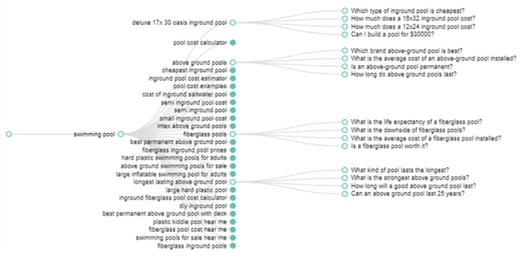
Under the “swimming pool” pillar, DemandJump recommends a large list of keywords that could be potential support pillars. When each support pillar topic is selected, recommended blogs to link to that pillar are identified.
Pillar and cluster content also includes blogs. These are 750-900 word pieces that answer specific questions, share how-to’s and tips, and communicate timely perspectives on industry trends and news. The questions identified underneath each support pillar will make great starting blog topics.
All these individual pieces of content, linked correctly as pictured above, form a content cluster.
Without DemandJump, Pete might never have identified these support pillars and blogs as the questions and keywords which are actually most relevant to his audiences. Questions like “What is the downside of fiberglass pools?” would not seem natural as a blog topic, because they speak to the negative side of the product, but can ultimately lead readers to a positive conclusion. Or Pete might have assumed they needed to write “types of pools” as a support pillar, except that users are not searching for that information. Instead, they already search for specific types and dimensions of pools, so he needs to prioritize those topics.
The process of figuring out the right starting point to win page ranks within a content cluster is made far easier and more precise with DemandJump. If marketers set out making assumptions about what is relevant to users, they won’t realize their content cluster is targeted at the wrong topic until after the campaign fails. Our platform provides a precise degree of insight into the current state of the content cluster around any keyword within a few minutes.
How Do You Do Linking for a Content Cluster on a Website?
We are always testing our linking approaches to see what could work better, but DemandJump has found success with one specific approach to content interlinking. In our content cluster structure, as much SEO authority as possible is directed to the main pillar piece (3,000 words). This is achieved by having no outward links to any of the support pillars or blogs in the pillar. Instead, all the support pillars and blogs link to the pillar page. The hyperlinks must be oriented directly on the title keyword phrase of the pillar piece.
The support pillars (1500-2000 words) link only to the pillar page. Then, blogs (750-900 words) link to both the pillar page and one or more of the support pillars.
Essentially, the interlinking strategy matches the branching pattern of the pillar strategy. The pillar at the top links only to a landing page or contact form at the end in a call to action.
How Do Blog Posts Fit Into Topic Clusters?
Blog posts are an opportunity to provide direct answers to long-form keywords and questions users are searching. They also lend authority to the pillar and support pillar by linking up to them within the content cluster. When traffic is captured in the blog, part of the “win” communicated to search engines is shared with the pillar and support pillar. For this reason, we generally recommend writing at least three blogs to link to every unique support pillar, and at least three support pillars linking to each pillar. That means the smallest topic cluster is around 13 pieces, depending on if you have blogs link to multiple support pillars or not.
Using Keywords Within a Content Cluster
The title of each piece in a content cluster is just one of the keywords to be included in the piece. Generally, for a pillar or support pillar the content writer should choose between 10-15 keywords, and for a blog, anywhere from 5-7 keywords, including the titles of the relevant pillars and support pillars.

Lucky for Pete, there is a feature within DemandJump to enable this decision-making as well. By clicking on an individual topic in Keywords & Positions, he can generate a deeper list of keywords to use while writing the content.
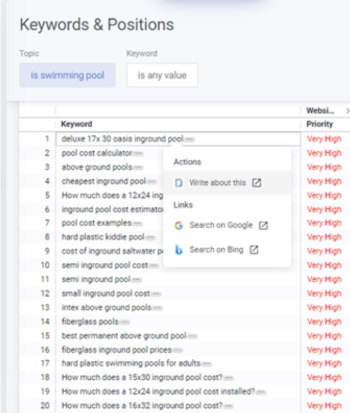
Within the Content Brief (pictured below), some very high-value keywords will be repeated because they are so important to include. In other cases, the recommended keywords might not totally align with the writer’s vision for the piece. That is okay! The Content Brief includes far more than the necessary number of keywords, so that the writer or marketer can pick and choose the ones which make the most sense to use as their headlines and in their content.
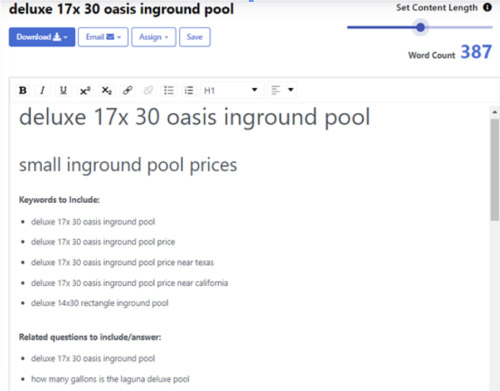
Through the power of the content cluster, Pete’s Pools can focus their time on creating content they know speaks to exactly what their audiences are searching for. No more hours of energy wasted creating something that gets zero web traffic. Instead, Pete’s marketing will drive more qualified leads to his contact form and web brochures, strengthening his bottom line and sustaining his business through alignment with customer needs.
Become the Next DemandJump Success Story
Creating a content cluster is an incredible modern marketing strategy to win search authority by creating meaningful, relevant content. But executing this strategy with confidence in your keyword choices and knowledge of audience behaviors is much easier when enabled by technology. The DemandJump platform carries out advanced analytics (that would take a human months) in a matter of minutes. The result? You can get to work faster, creating content that reaches your audiences right where they are. Sign up for your free account and learn what content clusters our algorithm recommends for you!








